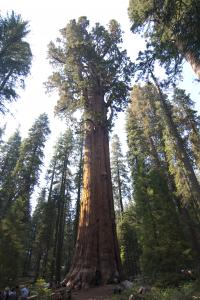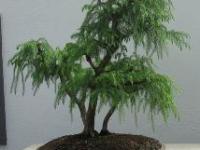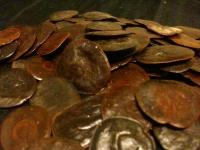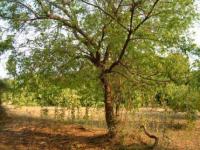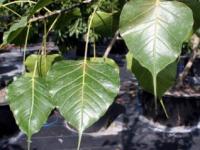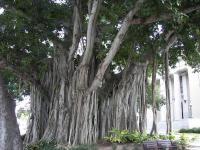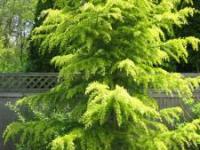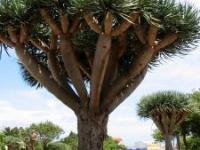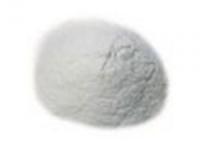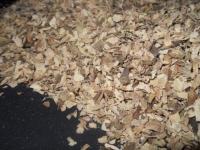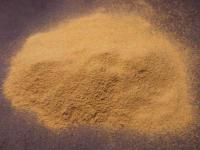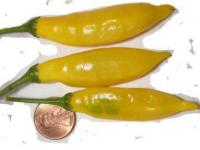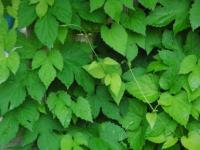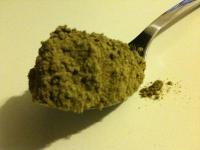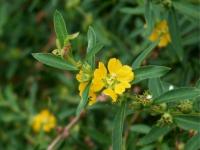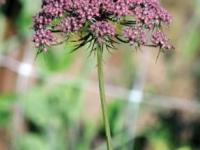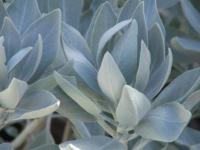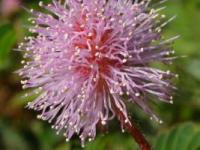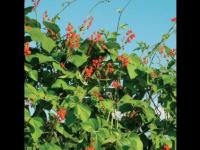Sequoiadendron Giganteum (Giant Sequoia)
Each lot contains 5 seeds
Sequoiadendron Giganteum is one of three tree species, known as “Giant Sequoia”. But Sequoiadendron Giganteum is the one most commonly referred to when people use the name. Giganteum is the only species in its genus, although there is another extinct species that once existed on the Western slopes of the Sierra Nevada Mountains where giganteum resides. The giant sequoia is the largest tree in terms of volume, with heights stretching well over 250 feet. The tallest on record has topped out at over 300 feet. Ironically, these trees are a very popular choice for bonsai. Based on ring count, the oldest specimens date back as much as 3,500 years. Giant sequoias are known for their utterly jaw-dropping tree trunks. The California Tunnel Tree in The Mariposa Grove of Yosemite National Park actually had a tunnel built through it so that coaches could pass through back in the 1800’s. And with thick trunks comes thick bark. In fact, the thickest bark on record for one of thee trees is at least three feet! Like the pines of the pine barrens on the east coast, the Giant sequoias have actually adapted a remarkable ability to endure wildfires. Not only do they endure the fires, but they actually rely on them for survival as the fires clear competing vegetation every so often, giving the sequoia seeds a chance to germinate and thrive. Aside from its ability to amaze, the wood of the Giant Sequoia is extremely valued because it is very resistant to rot and has extreme durability when used as a building material. In the late 1800’s into the early 1900’s logging was a big industry in that area until preservation laws came into effect. Giant Sequoias are commonly grown in the U.S and Europe as ornamentals, and there has even been some efforts at farming them for Christmas trees.
Growing Information:
The seeds of Giant Sequoia are notoriously difficult to germinate as they are very particular about the conditions they need for germination. Even if the seeds do germinate, they require a skilled grower to get them beyond the seedling stage. But that makes them especially rewarding to grow for those who fully succeed. The seeds should first be soaked overnight in water. Distilled water or even bottled water is recommended. After the soak, you need to cold stratify your seeds in the fridge for one month. That involves putting them in some type of non-soil growing medium such as a damp paper towel, rockwool or sterile sand. One trick that will help keep molds from growing is to use a little bit of hydrogen peroxide to moisten your substrate instead of water. After placing your seeds in the moist substrate, you want to put them into a re-sealable plastic baggie or something like a take-out container with a lid. The latter is probably better because it has a little more room to hold air. Place the seeds in the fridge and check them regularly to make sure the substrate has the proper moisture and to air out the bag/container. After a month, the seeds will need to be placed at 70 degrees Fahrenheit for germination. You can choose to germinate the seeds in the bag and then transplant them to soil after or you can transplant them to soil after cold stratifying and wait for sprouts to pop up. If you are using the second option, bury your seeds at just ¼” deep as burying them too deep can ruin your chances of success. Giant sequoia seeds require a mineral-rich soil with good drainage. The advantage of germinating them before moving them to soil is that the soil can hold more contaminants than your starting substrate. For good measure, you may even change the paper towel, rock wool or whatever you chose to use so you have fresh material for this next stage. It is especially important that the seedlings do not get too wet. Do not water too much or too frequently. Allow the soil to dry out a bit between waterings. Expose them to light gradually. The seedlings also do not fair well in hot, humid conditions. They tend to be easier to work with on the west coast. But if you are growing indoors you should be able to control these conditions. It may also mean that you’ll have an easier time raising seedlings indoors in the winter on the east coast because that is when the humidity is naturally low.
Each lot contains 5 seeds
Sequoiadendron Giganteum is one of three tree species, known as “Giant Sequoia”. But Sequoiadendron Giganteum is the one most commonly referred to when people use the name. Giganteum is the only species in its genus, although there is another extinct species that once existed on the Western slopes of the Sierra Nevada Mountains where giganteum resides. The giant sequoia is the largest tree in terms of volume, with heights stretching well over 250 feet. The tallest on record has topped out at over 300 feet. Ironically, these trees are a very popular choice for bonsai. Based on ring count, the oldest specimens date back as much as 3,500 years. Giant sequoias are known for their utterly jaw-dropping tree trunks. The California Tunnel Tree in The Mariposa Grove of Yosemite National Park actually had a tunnel built through it so that coaches could pass through back in the 1800’s. And with thick trunks comes thick bark. In fact, the thickest bark on record for one of thee trees is at least three feet! Like the pines of the pine barrens on the east coast, the Giant sequoias have actually adapted a remarkable ability to endure wildfires. Not only do they endure the fires, but they actually rely on them for survival as the fires clear competing vegetation every so often, giving the sequoia seeds a chance to germinate and thrive. Aside from its ability to amaze, the wood of the Giant Sequoia is extremely valued because it is very resistant to rot and has extreme durability when used as a building material. In the late 1800’s into the early 1900’s logging was a big industry in that area until preservation laws came into effect. Giant Sequoias are commonly grown in the U.S and Europe as ornamentals, and there has even been some efforts at farming them for Christmas trees.
Growing Information:
The seeds of Giant Sequoia are notoriously difficult to germinate as they are very particular about the conditions they need for germination. Even if the seeds do germinate, they require a skilled grower to get them beyond the seedling stage. But that makes them especially rewarding to grow for those who fully succeed. The seeds should first be soaked overnight in water. Distilled water or even bottled water is recommended. After the soak, you need to cold stratify your seeds in the fridge for one month. That involves putting them in some type of non-soil growing medium such as a damp paper towel, rockwool or sterile sand. One trick that will help keep molds from growing is to use a little bit of hydrogen peroxide to moisten your substrate instead of water. After placing your seeds in the moist substrate, you want to put them into a re-sealable plastic baggie or something like a take-out container with a lid. The latter is probably better because it has a little more room to hold air. Place the seeds in the fridge and check them regularly to make sure the substrate has the proper moisture and to air out the bag/container. After a month, the seeds will need to be placed at 70 degrees Fahrenheit for germination. You can choose to germinate the seeds in the bag and then transplant them to soil after or you can transplant them to soil after cold stratifying and wait for sprouts to pop up. If you are using the second option, bury your seeds at just ¼” deep as burying them too deep can ruin your chances of success. Giant sequoia seeds require a mineral-rich soil with good drainage. The advantage of germinating them before moving them to soil is that the soil can hold more contaminants than your starting substrate. For good measure, you may even change the paper towel, rock wool or whatever you chose to use so you have fresh material for this next stage. It is especially important that the seedlings do not get too wet. Do not water too much or too frequently. Allow the soil to dry out a bit between waterings. Expose them to light gradually. The seedlings also do not fair well in hot, humid conditions. They tend to be easier to work with on the west coast. But if you are growing indoors you should be able to control these conditions. It may also mean that you’ll have an easier time raising seedlings indoors in the winter on the east coast because that is when the humidity is naturally low.
- Brand WSF
00939
Payment Methods


Shipping
FREE Shipping
Shipping Policy
Item is shipped out within 3 business days.
Return/Exchange Policy
Exchanges are accepted but not returns.
Please Login or Register first before asking a question.
